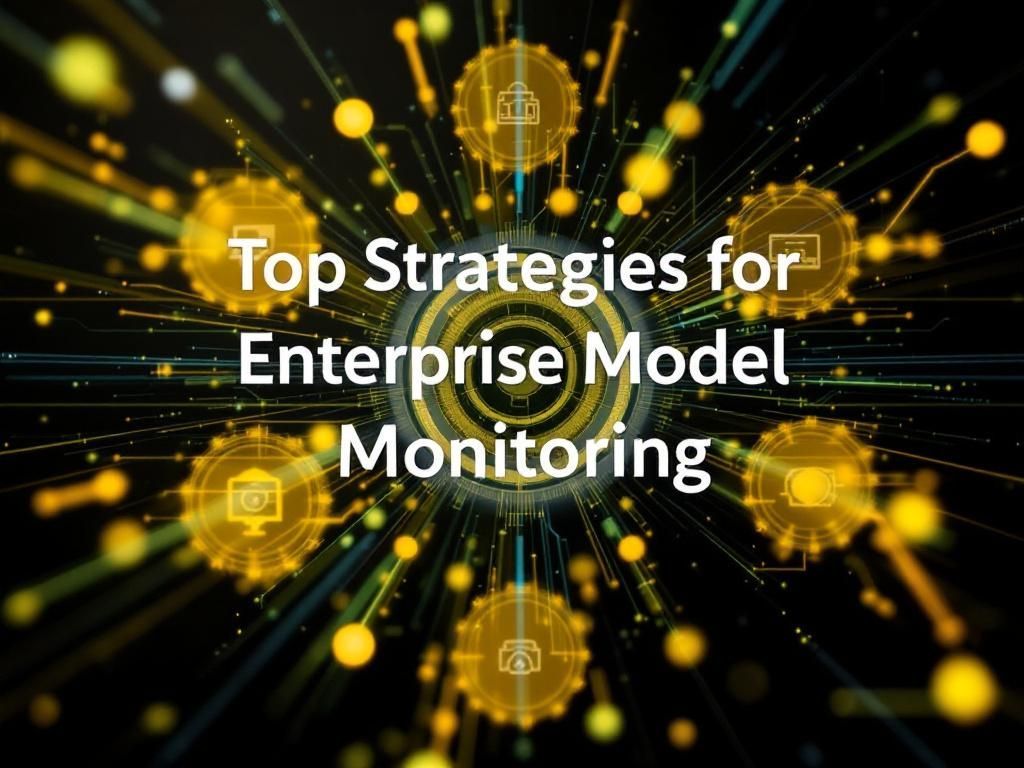In the rapidly evolving landscape of technology and enterprise solutions, effective model monitoring is paramount for organizations aiming to maintain a competitive edge. As we approach 2025, the strategies for monitoring and evaluating enterprise models must adapt to emerging technologies and methodologies. This article delves into the key strategies that organizations should adopt to enhance their model monitoring processes, ensuring accuracy, reliability, and alignment with business objectives.
The Importance of Model Monitoring
Model monitoring serves as the backbone of sustainable decision-making within an organization. When implemented appropriately, it mitigates risks associated with model drift, ensures compliance, and promotes trust in automated systems. Here are some essential reasons for prioritizing model monitoring:
- Risk Management: Detecting anomalies in model predictions can prevent costly errors.
- Regulatory Compliance: Adhering to industry standards and regulations helps avoid legal repercussions.
- Performance Optimization: Continuous monitoring allows for timely interventions to improve model accuracy.
- Stakeholder Trust: Demonstrating reliable model performance fosters confidence among stakeholders.
Strategy 1: Implement Continuous Monitoring
Continuous monitoring is a proactive approach that involves real-time evaluation of model performance against established benchmarks. This strategy enhances responsiveness to changes in data patterns. Key components of continuous monitoring include:
Real-Time Data Streams
Utilizing real-time data streams enables organizations to keep their models updated with the latest information. This can involve:
- Integrating APIs for live data access.
- Establishing data pipelines for seamless data flow.
Automated Alerts
Setting up automated alerts can help identify when model performance deviates from expected thresholds. Consider using:
- Threshold-based alerts for specific performance metrics.
- Machine learning algorithms to predict performance dips before they occur.
Strategy 2: Leverage Advanced Analytics
Advanced analytics tools enhance model monitoring by providing deeper insights into performance metrics. Organizations should consider the following:
Use of Predictive Analytics
Predictive analytics can identify potential future performance issues based on historical data trends. By implementing:
- Regression analysis to understand relationships between variables.
- Time-series forecasting to anticipate future data fluctuations.
Data Visualization Techniques
Effective data visualization allows stakeholders to grasp complex performance metrics quickly. Tools such as:
- Dashboards for real-time monitoring.
- Graphical representations of model accuracy over time.
Strategy 3: Foster Cross-Department Collaboration
Monitored models often draw insights from multiple departments. Establishing collaboration between teams can yield better outcomes. Steps to enhance cross-department collaboration include:
Regular Interdepartmental Meetings
Setting up regular meetings allows teams to share insights and challenges. These should focus on:
- Model performance updates.
- Data quality issues.
Shared Platforms for Model Management
Utilizing shared platforms for model management promotes transparency and collective ownership. Consider:
- Cloud-based model repositories for easy access.
- Version control systems to track changes and updates.
Strategy 4: Establish Clear Governance Structures
A robust governance structure is vital for effective model monitoring. It outlines roles, responsibilities, and processes necessary for accountability. Key elements include:
Defined Roles and Responsibilities
Clearly delineating roles ensures accountability in monitoring efforts. Suggested roles include:
- Model Owners: Responsible for model performance.
- Data Stewards: Manage data quality and integrity.
Policy Development
Creating policies for model updates and monitoring procedures helps standardize practices. These policies should address:
- Frequency of model evaluations.
- Criteria for model retirement or replacement.
Strategy 5: Embrace AI and Machine Learning
Integrating artificial intelligence (AI) and machine learning (ML) into model monitoring can significantly enhance efficiency. Techniques to consider include:
Automated Model Evaluation
AI can automate the evaluation of models, allowing for quicker identification of performance issues. Implement:
- Automated testing to validate model predictions.
- AI-driven insights to suggest improvements.
Adaptive Learning Systems
Adaptive learning systems adjust models based on new data inputs, ensuring they remain relevant. Key features include:
- Real-time learning from incoming data.
- Feedback loops that refine model accuracy.
Strategy 6: Prioritize Data Quality
Data quality is fundamental to effective model monitoring. Organizations must prioritize data management by:
Conducting Regular Data Audits
Regular audits help identify inconsistencies and errors in data. Consider:
- Establishing a schedule for data audits.
- Using automated tools to detect anomalies.
Implementing Data Governance Best Practices
Data governance frameworks ensure data integrity and availability. Best practices include:
- Defining data ownership to enhance accountability.
- Implementing data validation processes.
Conclusion
As organizations strive for excellence in their operations, the importance of model monitoring cannot be overstated. By adopting these strategic approaches for 2025, enterprises can not only enhance their model performance but also secure their place in the competitive market landscape. Continuous adaptation and innovation in monitoring practices will be crucial in navigating the complexities of future business environments.
FAQ
What are the top strategies for enterprise model monitoring in 2025?
In 2025, the top strategies for enterprise model monitoring include implementing automated monitoring tools, leveraging machine learning for anomaly detection, ensuring data governance, maintaining model explainability, and integrating real-time analytics.
How can organizations ensure data governance in model monitoring?
Organizations can ensure data governance in model monitoring by establishing clear policies, conducting regular audits, and using secure data management practices to maintain integrity and compliance.
Why is model explainability important in enterprise monitoring?
Model explainability is important in enterprise monitoring as it helps stakeholders understand the decision-making process of models, ensuring transparency and trust in automated systems.
What role does machine learning play in anomaly detection for model monitoring?
Machine learning enhances anomaly detection by analyzing historical data patterns, allowing organizations to identify unusual behavior in models and take proactive measures to address potential issues.
What are the benefits of integrating real-time analytics in model monitoring?
Integrating real-time analytics in model monitoring provides organizations with immediate insights into model performance, enabling quicker decision-making and faster responses to emerging risks.
How can automated monitoring tools improve enterprise model management?
Automated monitoring tools improve enterprise model management by reducing manual oversight, increasing efficiency, and providing consistent performance tracking across multiple models.


